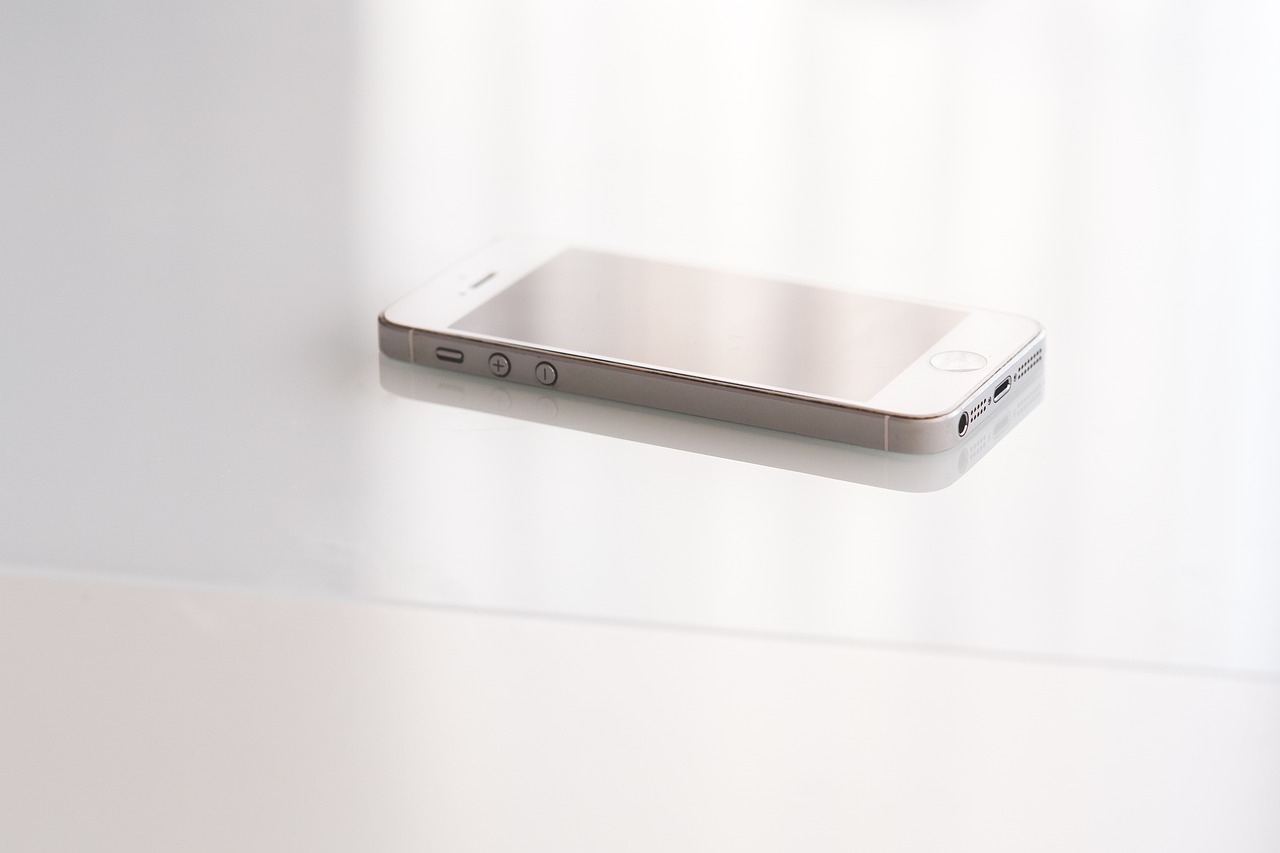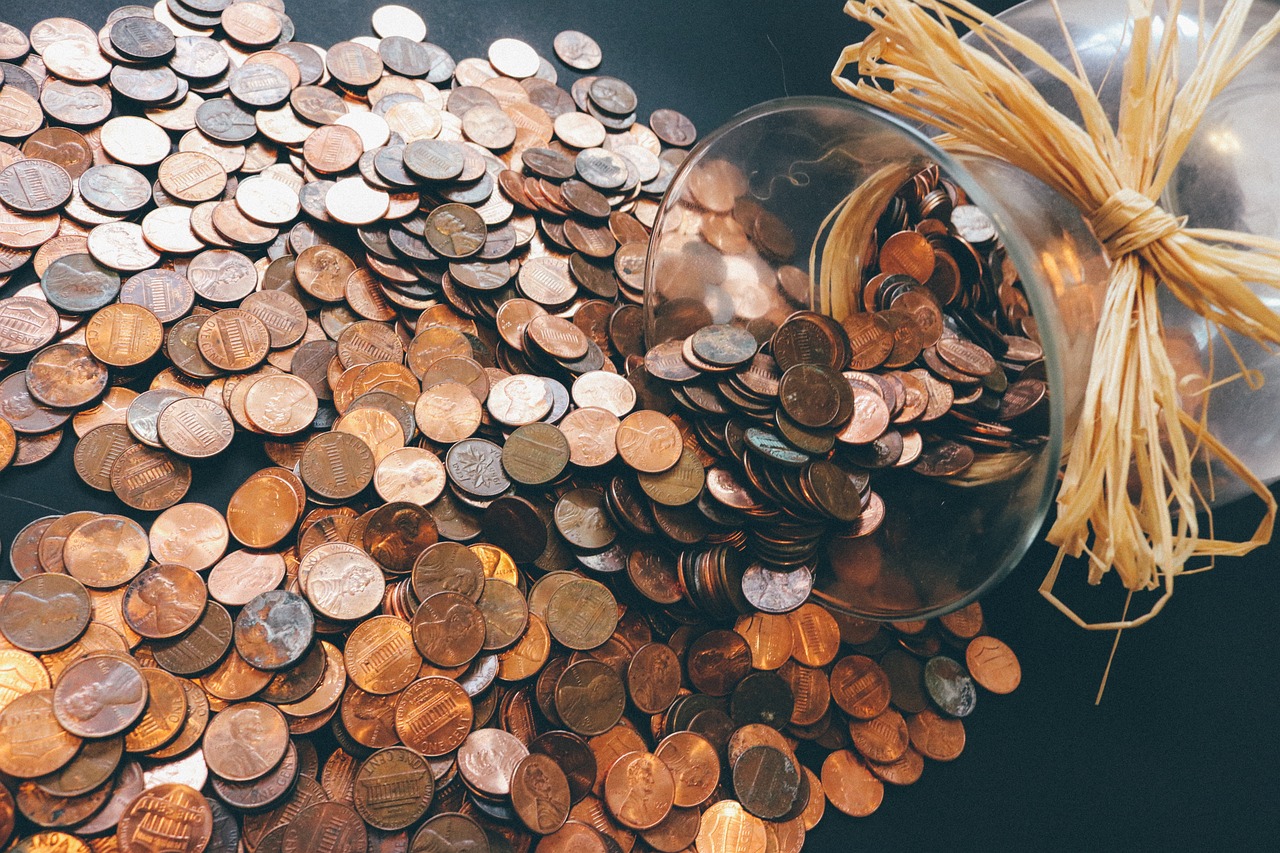Is it Safe to Use Online Banking on Mobile Devices?
In today's fast-paced world, online banking has become a lifeline for many of us, allowing us to manage our finances with just a few taps on our mobile devices. But with convenience comes concern: is it really safe to use online banking on mobile devices? The answer isn't as straightforward as we'd like it to be. While mobile banking offers unparalleled accessibility and ease, it also opens doors to a variety of risks that can jeopardize your financial security. In this article, we will delve into the potential risks associated with mobile banking, the robust security measures employed by banking apps, and best practices you can adopt to ensure a secure banking experience.
Mobile banking presents unique risks that every user should be aware of. Imagine you’re walking through a crowded café, checking your balance while sipping your coffee. Sounds harmless, right? But lurking in the shadows are threats like malware, phishing attacks, and unsecured Wi-Fi networks. These threats can compromise your sensitive financial information in an instant. For instance, malware can be stealthily installed on your device, tracking your every move, while phishing attacks trick you into giving away your credentials. It’s crucial to stay informed about these threats to effectively safeguard your financial information.
Fortunately, most mobile banking applications come equipped with advanced security features designed to protect users. Think of these features as a digital fortress around your finances. They include encryption, biometric authentication, and two-factor authentication. Each of these elements plays a vital role in enhancing user protection against unauthorized access and fraud. For instance, encryption ensures that your data is scrambled and unreadable to anyone who might intercept it, while biometric authentication adds an extra layer of security by requiring your unique fingerprint or facial recognition to access your account.
Encryption is a critical component of mobile banking security, acting like a secret code that protects your sensitive data during transmission. When you make a transaction, your information is encrypted, making it nearly impossible for anyone to decipher. Understanding how mobile banking apps utilize encryption can help you feel more secure when managing your finances on your devices. For example, most apps use SSL (Secure Socket Layer) and TLS (Transport Layer Security) protocols to ensure data integrity and confidentiality. These protocols work tirelessly in the background, keeping your information safe from prying eyes.
Different encryption methods serve distinct purposes, but they all aim to keep your data safe. Here’s a quick overview:
| Encryption Type | Description |
|---|---|
| SSL | Secures connections between your device and the bank’s server. |
| TLS | Enhances security by providing a more secure connection than SSL. |
Knowing these types can help you choose secure banking applications and understand the level of protection they offer.
Just like keeping your home secure requires regular maintenance, so does your mobile banking app. Regular updates to banking apps are essential for maintaining security. These updates often include patches for vulnerabilities, making it crucial for users to keep their apps current. By ignoring updates, you might be leaving the door wide open for cybercriminals to exploit weaknesses in outdated software.
In an age where passwords can be guessed or stolen, biometric authentication methods like fingerprint and facial recognition provide an additional layer of security. These features work by analyzing unique traits that are incredibly difficult to replicate. Users should understand how these features work to enhance their mobile banking safety. For example, enabling fingerprint authentication means that even if someone has your phone, they can’t access your banking app without your unique fingerprint.
To navigate the world of mobile banking safely, implementing best practices can significantly reduce risks. Here are some essential steps to keep in mind:
- Creating Strong Passwords: A strong password is your first line of defense against unauthorized access. Aim for a mix of letters, numbers, and symbols.
- Enabling Notifications: Set up alerts for transactions and account changes to monitor any suspicious activity.
- Avoiding Public Wi-Fi: Using public Wi-Fi networks for online banking can expose you to security threats. Stick to secure connections whenever possible.
A strong password is the first line of defense against unauthorized access. Users should learn how to create complex passwords that are difficult to guess. Think of it like creating a lock for your door—if it's easy to pick, it won’t keep unwanted visitors out. Use a combination of uppercase letters, lowercase letters, numbers, and special characters to create a password that’s tough to crack.
Using public Wi-Fi networks for online banking can expose users to security threats. Picture this: you’re at a coffee shop, casually checking your balance on their free Wi-Fi. What you might not realize is that cybercriminals can easily intercept your data on unsecured networks. Understanding the risks associated with public connections can help users make safer choices. Whenever possible, stick to your mobile data or a secure, private network.
Q: Is it safe to use mobile banking?
A: Yes, as long as you follow best practices and use secure apps.
Q: What should I do if I suspect fraud?
A: Immediately contact your bank to report any suspicious activity.
Q: Can I trust all mobile banking apps?
A: No, always verify the app's credibility and check for security features before use.

Understanding Mobile Banking Risks
Mobile banking has revolutionized the way we manage our finances, offering the convenience of banking at our fingertips. However, with this convenience comes a set of unique risks that every user should be aware of. Imagine strolling through your favorite café, sipping on a latte, and effortlessly checking your account balance—all while being oblivious to the lurking dangers that could compromise your financial security. It's crucial to understand these risks to protect your hard-earned money.
One of the primary risks associated with mobile banking is malware. Just like a thief who stealthily enters your home, malware can infiltrate your device without you even noticing. This malicious software can capture sensitive information, such as passwords and account numbers, leading to unauthorized transactions. To combat this threat, users should regularly update their devices and install reputable antivirus software to detect and eliminate potential threats.
Another significant risk is phishing attacks. These attacks often masquerade as legitimate communications from your bank, tricking users into providing sensitive information. Picture receiving a text message that looks like it’s from your bank, urging you to click a link to verify your account details. If you fall for this trap, you could unwittingly hand over your credentials to cybercriminals. Always verify the source of any communication and avoid clicking on links from unknown senders.
Unsecured Wi-Fi networks pose yet another threat to mobile banking. Using public Wi-Fi can be like leaving your front door wide open while you’re at home. Hackers can easily intercept your data on unsecured networks, making it imperative to avoid conducting financial transactions in such environments. If you must use public Wi-Fi, consider employing a Virtual Private Network (VPN) to encrypt your connection and shield your data from prying eyes.
In summary, while mobile banking offers incredible convenience, it’s essential to remain vigilant against potential risks. By being aware of threats like malware, phishing attacks, and unsecured networks, users can take proactive steps to safeguard their financial information. Remember, your financial security is in your hands, and understanding these risks is the first step towards a safer banking experience.
- What is mobile banking? Mobile banking allows users to perform financial transactions via their smartphones or tablets.
- How can I protect myself from phishing attacks? Always verify the source of communications and avoid clicking on suspicious links.
- Is it safe to use public Wi-Fi for banking? It’s best to avoid public Wi-Fi for banking transactions, as these networks can be insecure.
- What should I do if I suspect my account has been compromised? Immediately contact your bank and change your passwords.

Security Features of Mobile Banking Apps
In today’s fast-paced digital world, mobile banking apps have become a staple for managing finances on the go. However, with convenience comes the need for heightened security. Most mobile banking applications are designed with advanced security features that aim to protect users from potential threats. Understanding these features is crucial for ensuring a safe banking experience. So, what are these security measures that make mobile banking safer?
One of the most significant security features is encryption. This technique scrambles your data during transmission, making it unreadable to anyone who might intercept it. Think of it as sending a secret message that only the intended recipient can decode. Most reputable banking apps use SSL (Secure Socket Layer) or TLS (Transport Layer Security) protocols to safeguard sensitive information like passwords and account numbers. By employing these encryption methods, banks can ensure that your data remains confidential and secure.
Encryption is not just a buzzword; it's a critical aspect of online security. When you initiate a transaction through your mobile banking app, your data travels through various networks. Without encryption, this data could be easily accessed by cybercriminals. By using SSL or TLS, your data is encrypted in transit, which means that even if it is intercepted, it will be in a format that is nearly impossible to decipher. This level of security gives users peace of mind, knowing that their financial information is protected.
There are various types of encryption methods employed by mobile banking apps, each serving a unique purpose. Here’s a quick overview:
| Type of Encryption | Description |
|---|---|
| SSL | Secures data sent over the internet by encrypting the connection between the user and the server. |
| TLS | An updated version of SSL, offering enhanced security features and better performance. |
By understanding these encryption types, users can make informed decisions when selecting a banking application, ensuring that their financial data is adequately protected.
Another critical aspect of mobile banking security is the need for regular app updates. These updates often include security patches that address vulnerabilities discovered after the app's initial release. Just like you wouldn't leave your front door unlocked, you shouldn't ignore the importance of keeping your banking app updated. By enabling automatic updates, you ensure that you always have the latest security features and fixes, which can significantly reduce the risk of unauthorized access.
In addition to encryption and regular updates, many mobile banking apps now offer biometric authentication as a security feature. This includes methods such as fingerprint scanning and facial recognition. These technologies provide an additional layer of protection, making it much harder for unauthorized users to access your account. Imagine trying to unlock a vault with a fingerprint; unless you have the right print, you’re out of luck! Understanding how these features work can help users feel more secure when managing their finances on mobile devices.
In conclusion, the security features of mobile banking apps are designed to protect users from a variety of threats. By leveraging encryption, regular updates, and biometric authentication, users can enjoy a safer banking experience. Awareness of these features not only enhances user confidence but also promotes responsible banking practices in an increasingly digital world.
- Is mobile banking safe? Yes, mobile banking is safe if you follow best practices and use apps with strong security features.
- What should I do if I suspect fraud? Immediately contact your bank and report any suspicious activity.
- Can I use public Wi-Fi for mobile banking? It’s best to avoid public Wi-Fi for banking transactions due to security risks.

Encryption Techniques
When it comes to mobile banking, encryption is your best friend. It’s like a protective shield that keeps your sensitive data safe from prying eyes. Imagine sending a postcard with your financial details written on it; anyone could read it. Now, picture sending a locked box instead, where only you and the recipient have the keys. That’s the essence of encryption!
Mobile banking apps utilize various encryption techniques to ensure that your data remains confidential and secure during transmission. The most common methods include SSL (Secure Sockets Layer) and TLS (Transport Layer Security). These protocols create a secure channel between your device and the bank’s server, making it nearly impossible for hackers to intercept your information.
Let’s break down these techniques:
- SSL: This is an older protocol that, while still in use, has been largely succeeded by TLS. SSL encrypts data in transit, ensuring that it cannot be read by anyone who might intercept it.
- TLS: This is the more modern version of SSL and provides stronger security. It not only encrypts the data but also checks that the data has not been altered during transmission.
Understanding these encryption techniques can significantly enhance your confidence when using mobile banking apps. It’s essential to choose apps that explicitly state they use these secure protocols. Look for signs like a padlock icon in the browser address bar or notifications within the app that confirm your connection is secure.
Moreover, banks often implement additional layers of security by utilizing encryption keys. These keys are like secret codes that are used to encrypt and decrypt the data. The longer and more complex the key, the harder it is for cybercriminals to crack it. This means that even if someone manages to intercept your data, they would still need the key to make sense of it, which is nearly impossible to obtain if proper security measures are in place.
In summary, encryption techniques are crucial for protecting your financial information while using mobile banking. By understanding how these methods work and ensuring that your banking app employs them, you can significantly reduce the risk of unauthorized access to your sensitive data. So, next time you log into your banking app, remember that encryption is working hard behind the scenes to keep your information safe!
- What is encryption in mobile banking?
Encryption in mobile banking is the process of converting sensitive data into a secure format that can only be read by authorized parties. It protects your financial information from unauthorized access.
- How can I tell if my banking app uses encryption?
Look for indicators such as a padlock icon in the address bar or security notifications within the app. You can also check the app's privacy policy for information on their security measures.
- Is it safe to use public Wi-Fi for mobile banking?
Using public Wi-Fi can be risky for online banking due to potential security threats. It's best to avoid conducting sensitive transactions on public networks.

Types of Encryption
When it comes to mobile banking, understanding the used in apps can significantly enhance your sense of security. Encryption acts as a shield, protecting your sensitive information from prying eyes. Two of the most commonly used encryption protocols in mobile banking are SSL (Secure Sockets Layer) and TLS (Transport Layer Security). Both of these protocols ensure that the data transmitted between your device and the bank's server remains confidential and intact.
To break it down further, think of SSL and TLS as digital locks on your data. When you send information, like your account number or password, these protocols encrypt the data, making it nearly impossible for anyone without the right key to access it. Imagine sending a secret message in a code only you and your bank can understand—this is essentially what encryption does.
| Encryption Type | Description | Use in Mobile Banking |
|---|---|---|
| SSL | A protocol that establishes a secure connection between a web server and a browser. | Ensures data sent over the internet is encrypted, preventing interception. |
| TLS | An updated version of SSL that provides enhanced security features. | Used for secure connections in mobile banking apps for data transmission. |
In addition to SSL and TLS, many banking apps also employ encryption algorithms such as AES (Advanced Encryption Standard). AES is widely regarded as one of the most secure encryption methods available. It works by transforming your data into an unreadable format, which can only be reverted back to its original state with a specific key. This means that even if someone were to intercept your data, they would be unable to decipher it without the correct encryption key.
Understanding these encryption types not only helps you appreciate the security measures in place but also empowers you to make informed decisions about which banking apps to trust. Always look for apps that explicitly mention the use of SSL, TLS, or AES encryption, as this indicates a commitment to protecting your financial information. Remember, in the world of online banking, knowledge is your best defense!
- What is encryption? Encryption is a method of converting information into a code to prevent unauthorized access.
- Why is encryption important for mobile banking? It protects sensitive information during transmission, ensuring that only authorized parties can access it.
- How can I tell if my banking app uses encryption? Look for security features mentioned in the app's description or contact the bank for clarification.
- Is SSL still safe to use? Yes, while TLS is the more secure option, SSL is still widely used and provides a level of security.

Importance of Regular Updates
When it comes to mobile banking, one of the most critical aspects that often gets overlooked is the . Just like how we need to keep our homes secure with the latest locks and alarms, our mobile banking apps require frequent updates to maintain their security integrity. These updates are not just minor tweaks; they often include crucial security patches that fix vulnerabilities that could be exploited by cybercriminals. Imagine your banking app as a fortress—if the walls are crumbling, it becomes easier for intruders to break in. Regular updates are the repairs that keep your fortress standing strong.
Moreover, the digital landscape is constantly evolving, with new threats emerging almost daily. Hackers are always on the lookout for weaknesses in software, and outdated apps are prime targets. By keeping your mobile banking app up to date, you are effectively fortifying your defenses. For instance, if a vulnerability is discovered in a popular banking app, the developers will issue an update to patch that hole. If you’re still using an older version of the app, you could be leaving yourself open to attack. Therefore, it’s not just a good habit; it’s a necessity.
Another important factor is that updates often come with new features that enhance user experience. These features may include improved user interfaces, faster transaction processing, and even additional security measures. So, not only do you protect your sensitive information, but you also benefit from a smoother banking experience. Think of it like upgrading your phone's operating system. Each update brings enhancements that make your device more efficient and secure.
To ensure you never miss an important update, consider enabling automatic updates on your device. This way, you won't have to worry about manually checking for updates; your device will do it for you. If you prefer to keep manual control, make it a habit to check for updates regularly—perhaps once a week. Staying proactive is the key to a secure mobile banking experience.
In summary, the importance of regular updates for your mobile banking app cannot be overstated. They are essential for:
- Fixing security vulnerabilities
- Enhancing user experience
- Adding new features and functionalities
By prioritizing updates, you are taking a significant step towards safeguarding your financial information and ensuring a seamless banking experience. So, don’t wait—make those updates a priority today!
- How often should I update my mobile banking app?
It is advisable to check for updates at least once a week or enable automatic updates to ensure you have the latest security features. - What happens if I don’t update my banking app?
Not updating your app can leave you vulnerable to security threats, as outdated software may have unpatched vulnerabilities that hackers can exploit. - Are updates only for security purposes?
No, updates often include new features and improvements that enhance the overall user experience, making banking easier and more efficient.

Biometric Authentication
Biometric authentication has revolutionized the way we secure our mobile banking activities. Imagine having a personal bodyguard for your financial transactions—this is precisely what biometric features like fingerprint scanning and facial recognition offer. These technologies leverage unique physical characteristics to verify your identity, making it significantly harder for unauthorized users to gain access to your accounts. But how do these systems work, and why should you care?
When you use biometric authentication, your device captures a sample of your fingerprint or face and converts it into a digital format. This digital representation is stored securely on your device, not on a central server, which minimizes the risk of data breaches. Each time you attempt to access your banking app, the system compares the captured biometric data with the stored version to confirm your identity. If there's a match, you gain access; if not, the door remains firmly shut.
Here are a few reasons why biometric authentication is a game-changer for mobile banking:
- Enhanced Security: Biometric traits are unique to each individual, making it exceedingly difficult for someone to impersonate you.
- Convenience: Forgetting passwords is a common issue, but you never forget your fingerprint or face!
- Speed: Biometric authentication is often quicker than traditional methods, allowing for seamless transactions.
However, while biometric authentication offers significant advantages, it’s essential to understand its limitations. For example, if your device is lost or stolen, someone could potentially access your accounts if they can replicate your biometric traits. Additionally, some users may have concerns about privacy and how their biometric data is stored and used. Therefore, it’s crucial to choose reputable banking apps that prioritize security and transparency regarding biometric data usage.
Overall, incorporating biometric authentication into your mobile banking routine can significantly enhance your security posture. As technology continues to evolve, staying informed about these advancements can empower you to make safer choices in managing your finances.
Q1: Is biometric authentication completely secure?
A1: While biometric authentication adds an extra layer of security, it's not foolproof. Always combine it with other security measures like strong passwords and two-factor authentication for optimal protection.
Q2: Can my biometric data be hacked?
A2: Although the risk exists, biometric data is generally stored securely on your device. However, always ensure you’re using apps from trusted sources to minimize risks.
Q3: What should I do if I change my biometric traits?
A3: If your fingerprint changes due to injury or if you undergo cosmetic procedures, you may need to re-register your biometric data in your banking app settings.

Best Practices for Safe Online Banking
When it comes to mobile banking, ensuring your financial safety is paramount. While technology has made banking more convenient than ever, it has also opened the door to potential risks. So, how can you protect yourself? Let’s dive into some best practices that can significantly enhance your online banking security.
First and foremost, creating strong passwords is essential. Think of your password as the lock on your front door; the stronger it is, the harder it is for intruders to get in. A good password should be a mix of uppercase and lowercase letters, numbers, and special characters. Avoid using easily guessed information, such as birthdays or common words. A password manager can help you create and store complex passwords securely.
Another critical aspect is to enable two-factor authentication (2FA). This adds an extra layer of security by requiring not only your password but also a second form of verification, such as a code sent to your phone. It’s like having a security guard check your ID before letting you into a secure building. Even if someone manages to steal your password, they won't have access to your second factor of authentication.
It's also vital to be cautious about public Wi-Fi networks. While it may be tempting to check your bank balance while sipping coffee at a café, public networks are often unsecure and can expose your data to hackers. If you must use public Wi-Fi, consider using a virtual private network (VPN) to encrypt your connection. Think of a VPN as a secret tunnel that shields your data from prying eyes.
Additionally, always keep your mobile banking app updated. Just like your phone needs regular updates to function properly, so do your apps. These updates often contain important security patches that protect against newly discovered vulnerabilities. Ignoring updates is like leaving your front door unlocked; it invites trouble.
Lastly, be vigilant about notifications. Most banking apps allow you to set up alerts for transactions. This feature can help you quickly spot any unauthorized activity. If you receive a notification about a transaction you didn’t make, you can act swiftly to secure your account. It’s like having a security alarm that alerts you when something suspicious is happening.
In conclusion, by implementing these best practices, you can significantly reduce the risks associated with online banking. Remember, your financial security is in your hands, and taking these steps will help ensure a safer banking experience on your mobile device.
- Is it safe to use my bank’s app on public Wi-Fi?
It’s not recommended. Public Wi-Fi is often insecure, making it easier for hackers to intercept your data. If you must use it, consider using a VPN. - What should I do if I suspect fraudulent activity on my account?
Immediately contact your bank to report the suspicious activity and follow their instructions to secure your account. - How often should I change my banking password?
It’s advisable to change your password every 3 to 6 months, or immediately if you suspect your account has been compromised. - Are biometric authentications safe?
Yes, biometric authentications, like fingerprints and facial recognition, provide an additional layer of security, making it harder for unauthorized users to access your account.

Creating Strong Passwords
When it comes to online banking, creating strong passwords is your first line of defense against unauthorized access. Think of your password as the key to your financial fortress; if it’s weak, you’re essentially leaving the door wide open for intruders. A strong password should be complex and unique, making it nearly impossible for anyone to guess. Here are some important tips to consider while crafting your passwords:
- Length Matters: Aim for at least 12-16 characters. The longer your password, the harder it is to crack.
- Mix It Up: Use a combination of uppercase and lowercase letters, numbers, and special characters. This creates a more intricate pattern that’s difficult to decipher.
- Avoid Personal Information: Don’t use easily accessible information like your name, birthday, or pet’s name. If it can be found on your social media, it’s not safe!
- Unique Passwords for Different Accounts: Never use the same password across multiple sites. If one account gets compromised, others will be at risk too.
Consider using a password manager to help you generate and store complex passwords securely. These tools can create random passwords that are nearly impossible to crack, while also keeping them organized and safe. Just remember, even the most complex password is useless if you don’t keep it confidential. Never share your passwords, and be cautious of phishing attempts that try to trick you into revealing them.
In addition to creating strong passwords, regularly updating them is essential. Think of it like changing the locks on your doors; it’s a good practice to do it periodically to enhance security. A good rule of thumb is to change your passwords every three to six months, especially if you suspect any suspicious activity. Keeping your passwords fresh can help safeguard your financial information from potential threats.
To sum it up, creating strong passwords is not just a suggestion; it’s a necessity for anyone engaging in mobile banking. By following these guidelines and regularly updating your passwords, you can significantly reduce the risk of unauthorized access to your banking information. Remember, your financial security is in your hands!
Q: How often should I change my banking passwords?
A: It’s recommended to change your passwords every three to six months, or immediately if you suspect any unauthorized access.
Q: Can I use the same password for different accounts?
A: No, using the same password for multiple accounts increases the risk of all your accounts being compromised if one is hacked.
Q: What should I do if I forget my password?
A: Use the password recovery options provided by your banking app or website. They typically send a verification link or code to your registered email or phone number.
Q: Are password managers safe?
A: Yes, reputable password managers use strong encryption to protect your data. They can help you create and store complex passwords securely.

Avoiding Public Wi-Fi
When it comes to online banking, using public Wi-Fi can feel like playing a game of Russian roulette with your financial information. Sure, it’s convenient to log into your bank account while sipping a latte at your favorite café, but the risks far outweigh the benefits. Public Wi-Fi networks are notoriously insecure, making them a prime target for hackers looking to intercept sensitive data. Imagine sending your bank details through a wide-open door, just waiting for someone to stroll by and take a peek.
So, what makes public Wi-Fi so risky? For starters, these networks often lack proper encryption, which means that any data transmitted over them can be easily captured by cybercriminals. It's like sending a postcard with your personal information instead of a sealed letter. Additionally, hackers can set up rogue hotspots that mimic legitimate networks, tricking unsuspecting users into connecting. Once connected, they can access everything from passwords to banking information without breaking a sweat.
To protect yourself while banking on the go, consider these best practices:
- Use a VPN: A Virtual Private Network encrypts your internet connection, making it much harder for anyone to snoop on your activities.
- Turn off sharing: Disable file sharing and other sharing options on your device when using public Wi-Fi.
- Forget the network: After using a public Wi-Fi network, make sure to forget it on your device to avoid automatically reconnecting in the future.
In summary, while public Wi-Fi might be tempting, it’s essential to think twice before accessing your bank account. Always prioritize your security by avoiding these networks when possible, and consider using safer alternatives like your mobile data or a personal hotspot. Remember, when it comes to your financial safety, it’s better to be safe than sorry!
Q: Is it ever safe to use public Wi-Fi for online banking?
A: It is generally not recommended to use public Wi-Fi for online banking due to the high risk of data interception. If you must use it, ensure you have a VPN and follow all security precautions.
Q: What should I do if I suspect my banking information has been compromised?
A: Immediately contact your bank to report the issue, change your passwords, and monitor your accounts for any unauthorized transactions.
Q: How can I tell if a public Wi-Fi network is secure?
A: Look for networks that require a password for access. However, even these can be risky, so using a VPN is a good practice regardless of the network's security status.
Frequently Asked Questions
- Is online banking on mobile devices safe?
Yes, online banking on mobile devices can be safe if users take the necessary precautions. Utilizing strong passwords, enabling two-factor authentication, and keeping apps updated are essential steps to enhance security.
- What are the common risks associated with mobile banking?
Common risks include malware infections, phishing attacks, and using unsecured public Wi-Fi networks. Being aware of these threats helps users protect their sensitive information.
- How do mobile banking apps ensure my data is secure?
Mobile banking apps employ various security measures, such as encryption, biometric authentication, and regular security updates, to protect user data from unauthorized access and fraud.
- What is encryption, and why is it important?
Encryption is a method of converting data into a coded format to prevent unauthorized access. It is crucial for ensuring the confidentiality and integrity of sensitive information during online banking transactions.
- What types of encryption should I look for in banking apps?
Look for apps that use SSL (Secure Sockets Layer) or TLS (Transport Layer Security) encryption, as these are standard protocols that help secure data transmitted over the internet.
- How often should I update my banking app?
It's essential to update your banking app regularly, ideally as soon as updates are available. These updates often include security patches that protect against newly discovered vulnerabilities.
- What is biometric authentication?
Biometric authentication uses unique physical characteristics, such as fingerprints or facial recognition, to verify a user's identity. This method adds an extra layer of security to mobile banking.
- What are some best practices for safe online banking?
Best practices include using strong, unique passwords, enabling account notifications, avoiding public Wi-Fi for transactions, and regularly monitoring account statements for any suspicious activity.
- How can I create a strong password?
A strong password should be at least 12 characters long and include a mix of uppercase and lowercase letters, numbers, and special characters. Avoid using easily guessable information like birthdays or names.
- Why should I avoid public Wi-Fi for banking?
Public Wi-Fi networks are often unsecured, making it easier for hackers to intercept your data. It's safer to use a secure, private connection when accessing banking information.



















